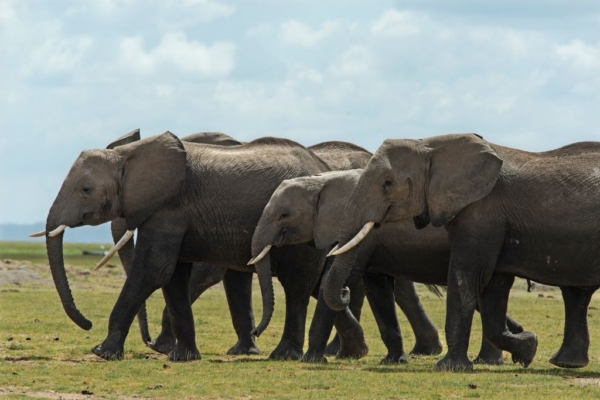Besides the long nose, the large ears are also a distinctive feature of elephants. In fact, elephants have the largest ears in the animal kingdom. So, what special functions do their big ears serve?
According to a report from Live Science, the ears of African elephants can grow up to 6.6 feet (2 meters) in length and 4 feet (1.2 meters) in width, while the ears of Asian elephants are a bit smaller and rounder.
The length of an elephant’s ears accounts for about 17% of its body length. Despite having the largest ears in the animal kingdom, in terms of the proportion of ear length to body length, they are surpassed by the long-eared jerboa. Nevertheless, the sheer size of elephants’ ears is still impressive.
Experts suggest that one practical reason elephants have large ears is to help them dissipate heat and keep cool.
William Sanders, a paleobiologist specializing in studying elephant fossils at the University of Michigan, told the website that large animals like elephants generate a lot of heat, but they don’t sweat like humans. Their ears serve as “amazing cooling devices” filled with large blood vessels that assist in regulating body temperature.
Advait Jukar, assistant curator of vertebrate paleontology at the Florida Museum of Natural History, explained that when elephants feel hot, blood flows into their ears, and they can cool off by flapping their ears.
The skin on an elephant’s ears is very thin, only a few millimeters thick, and the large blood vessels running through them allow them to pump about 20% of their blood to the ears at once.
Jukar noted that the larger the ears of an elephant, the greater the surface area for releasing heat into the surrounding air. As the blood flowing through their ears is warmer than the air, the heat dissipates into the air, while cooler blood circulates back into the body, helping to lower the overall body temperature.
Apart from aiding in cooling, elephant ears serve other purposes. Research indicates that elephants use their ears to conduct sound waves, which helps them hear low-frequency sounds. Elephants can also perceive low-frequency vibrations through their feet, as receptors on their feet can transmit vibrations throughout their bodies. Thus, elephants can communicate over distances of tens of miles using their feet and massive ear bones.
Sanders mentioned that elephants are highly social animals, and their large ears also aid in communication and signaling.
He illustrated that when elephants are about to charge, they extend their ears forward and start flapping them rapidly to appear larger. “This is a clear sign of their extreme anger. At this point, you should reverse or quickly leave the area.”

